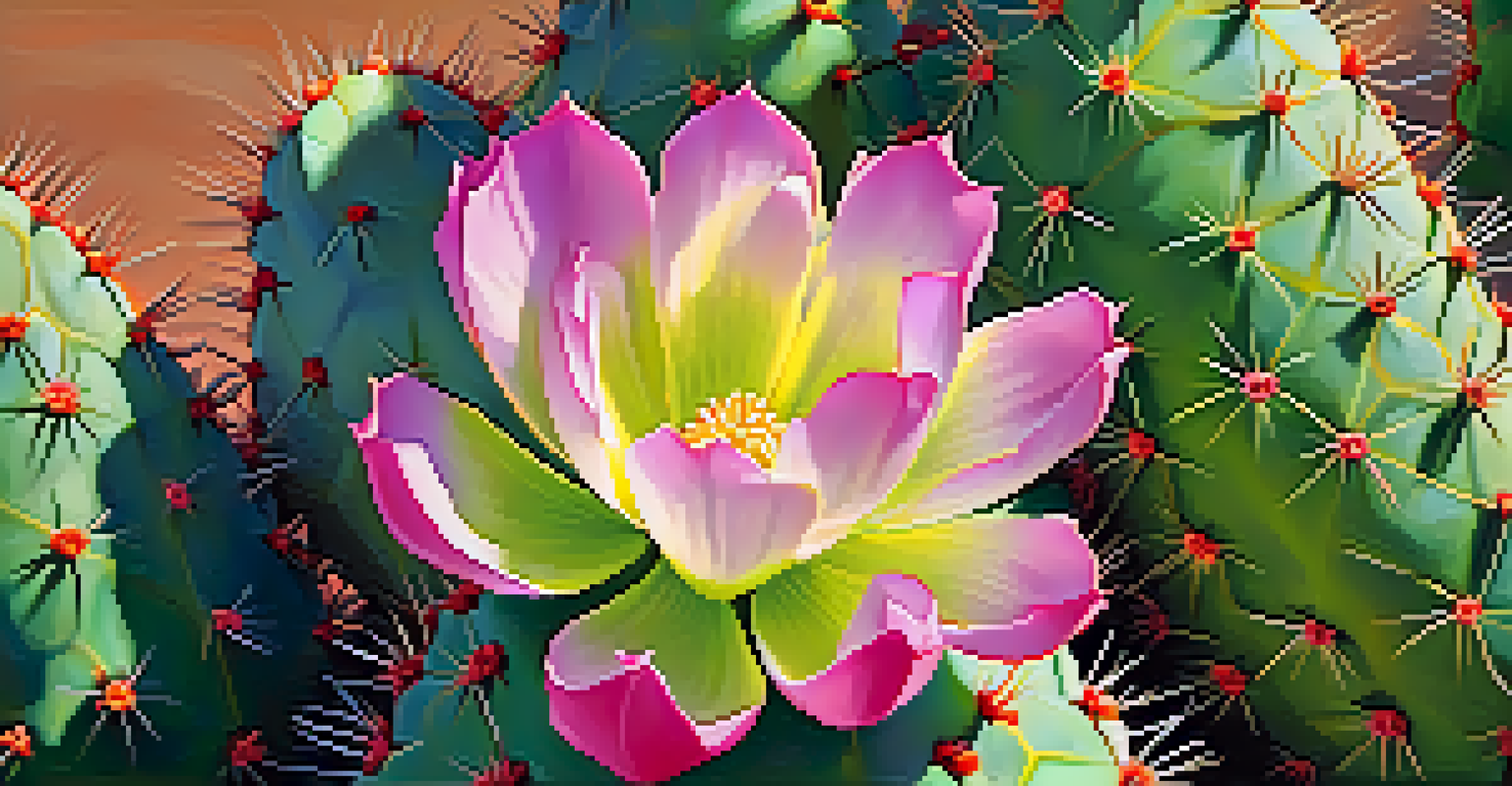Cultural Perspectives: Death and Peyote in Native American Beliefs

Understanding Death in Native American Cultures
Death is often viewed differently across various Native American cultures, emphasizing the continuity of life rather than an end. Many tribes believe in a cyclical nature of existence, where death is a transition rather than a conclusion. This perspective fosters a deep respect for life and the natural world, where ancestors remain a guiding presence.
The soul would have no rainbow if the eyes had no tears.
For instance, the Lakota people hold a belief in the spirit world, where the deceased continue to influence the living. Ceremonies and rituals are conducted to honor the dead, ensuring they are remembered and celebrated. These practices highlight a profound connection between the living and those who have passed on, reflecting a communal approach to grief and remembrance.
By understanding these cultural viewpoints, we can appreciate the rich tapestry of beliefs surrounding death. This perspective not only informs mourning practices but also shapes the way communities interact with nature and each other.
Peyote: A Sacred Plant in Native American Rituals
Peyote, a small cactus native to North America, holds immense spiritual significance in many Native American cultures. It is often consumed during religious ceremonies to induce visions and connect with the spiritual world. For tribes like the Huichol, peyote is seen as a direct link to the divine, facilitating communication with ancestors and the Creator.

The use of peyote is not just recreational; it's deeply rooted in tradition and belief. Ceremonial use is regulated and involves preparation, prayer, and community support. This highlights the respect and reverence Native Americans have for the plant, contrasting with modern perceptions of psychoactive substances.
Death as a Transition in Cultures
Many Native American cultures view death not as an end, but as a transformative journey, emphasizing continuity and connection with ancestors.
Through the lens of peyote, we can see how spirituality and nature intertwine in Native American beliefs. The plant serves as a bridge, allowing individuals to navigate their understanding of life, death, and the cosmos.
The Role of Peyote in Death Rituals
Peyote plays a vital role in various death rituals across Native American tribes, particularly within the Native American Church. During these ceremonies, participants often seek clarity and connection with the deceased, using peyote to facilitate spiritual communion. This practice underscores a belief that death is not an end, but a transformative journey.
We do not inherit the earth from our ancestors; we borrow it from our children.
Through peyote, individuals may receive messages or insights from the spirit world, providing comfort and closure. This can be particularly important for grieving families, as it allows them to feel connected to their loved ones even after they've passed. The shared experience of peyote enhances communal bonds, providing collective support in times of loss.
Ultimately, the integration of peyote into death rituals illustrates the profound interconnectedness of life, death, and spirituality in Native American cultures. It serves as a reminder that, while death is a natural part of life, the relationships we build transcend the physical realm.
Cultural Respect for Peyote and Its Use
Respect for peyote is deeply embedded in Native American traditions, where its use is often governed by strict cultural protocols. These guidelines ensure that peyote is consumed with intention and reverence, reflecting the sacred nature of the plant. This respect extends to the land where peyote grows, emphasizing a holistic approach to spirituality.
Unlike many modern practices that may trivialize or exploit psychoactive substances, Native American communities prioritize education and cultural heritage. They view peyote as a gift from the Earth, deserving of gratitude and careful stewardship. This perspective encourages sustainable practices that honor both the plant and the environment.
Peyote's Spiritual Significance
Peyote is revered in Native American rituals as a sacred plant that facilitates spiritual communion and connection with the divine.
By recognizing and respecting these cultural practices, we can foster a deeper understanding of peyote's role in Native American spirituality. It invites us to reconsider our own relationships with nature and the substances we use.
The Impact of Colonization on Peyote Practices
The arrival of European settlers dramatically affected Native American ways of life, including their spiritual practices surrounding peyote. Colonization led to the suppression of traditional beliefs and rituals, pushing these practices underground. Despite this, many tribes have continued to protect and preserve their sacred relationships with peyote.
In recent decades, there has been a resurgence of interest in peyote ceremonies, as Indigenous communities reclaim their cultural heritage. This revival is not only about spiritual connection but also about identity and community resilience. By reasserting their traditions, Native Americans resist the historical forces that sought to erase them.
Understanding this complex history highlights the importance of cultural preservation and respect for Indigenous practices. It sheds light on the ongoing struggles faced by Native American communities in their quest for autonomy and recognition.
Modern Perspectives on Death and Peyote
In today's world, the perspectives on death and peyote continue to evolve within Native American communities. Many younger generations are engaging with these traditions, finding new meanings and relevance in their cultural heritage. This revitalization often includes blending traditional practices with contemporary beliefs, creating a unique spiritual landscape.
Moreover, the increased visibility of Native American spirituality has sparked interest and dialogue beyond Indigenous communities. People from various backgrounds are exploring the teachings of these cultures, seeking wisdom about life and death. This cross-cultural engagement can foster understanding, but it also requires sensitivity to the origins and meanings of these practices.
Cultural Resilience Amid Colonization
Despite the impacts of colonization, Native American communities continue to reclaim and preserve their sacred practices surrounding peyote and death.
As we look to the future, the interplay between modernity and tradition will shape how death and peyote are understood. Leaving space for these discussions enriches our collective understanding of spirituality and the human experience.
Conclusion: Embracing Diverse Cultural Perspectives
Exploring Native American beliefs surrounding death and peyote invites us to embrace diverse cultural perspectives. These beliefs offer invaluable insights into how different communities navigate the complexities of life and death, enriching our collective understanding of the human experience. By honoring these traditions, we acknowledge the deep connections that exist between nature, spirit, and community.
As we engage with these ideas, it's essential to approach them with respect and openness. Understanding the significance of peyote and death rituals allows us to appreciate the resilience and richness of Native American cultures. It reminds us that spirituality is a deeply personal journey that can take many forms.

In a world that often feels disconnected, these perspectives can guide us toward greater empathy and connection. Embracing the wisdom of Native American beliefs can inspire us to reflect on our own relationships with life, death, and the natural world.